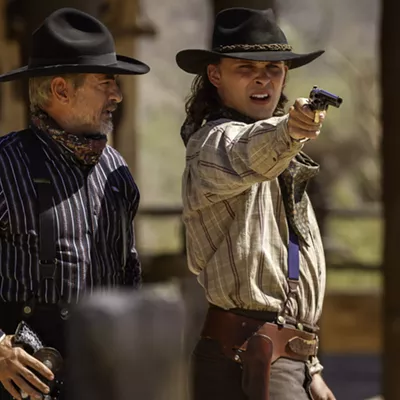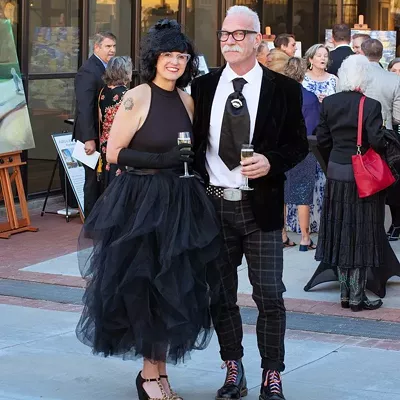"Beauty in women is endless," Ralph Gibson once wrote.
But how can a whole book of female nudes be "sufficiently interesting?" he wondered. A photographer "must find a way to avoid the pitfalls of the variations-on-a-theme idea in art."
Gibson, a renowned and widely admired photographer, had no trouble navigating away from repetition in his giant book "Nude." Photog fans can see for themselves at Etherton Gallery, where a dozen female nudes hang on the wall in lush gelatin-silver glory.
The variations are endless, to use Gibson's own word, and endlessly imaginative. Mostly we see body fragments: a woman's face in profile below a bent arm ("MJ, Sardina," 1980); the crook of the waist, the curve of a hip, the bend of the thigh ("Chicago Nude," 1981); a leaning torso in "Untitled (Out of Focus Nude)," the arms, legs and head unseen.
A full breast, photographed in profile in full light against inky blackness, loops down from a woman's neck in "Untitled (Breast and Neck)," 2012. Our only glimpse of her face is a dash of chin.
Occasionally Gibson photographs a longer sweep of flesh. In "MJ with Surf," a woman stretches out along the beach, the waves beyond echoing her curves, but Gibson photographs only her reclining torso, with just a hint of a bent arm and the top of the legs. And in the noir-ish "Striped Nude," from 1981, shadows from window blinds imprint a cascade of diagonal lines on the skin of a standing woman. She's nothing but stripes from her neck to her lower body.
Even though five of the works here picture Gibson's wife, Mary Jane Marcasiano, known here as "MJ," they make no attempt at portraiture. Gibson is not trying to capture emotion or personality. His female nudes may be erotic but they're cool and deliberate—he makes them into black-and-white abstractions of form and light and shadow. Beautifully reprinted this year, these nudes are now provocatively large-scale. "MJ with Surf," from 1979, is a whopping 5 feet long and more than 3 feet high.
Gibson, a New Yorker now 76 years old, has been long been known for works informed by surrealism. His early book "The Somnambulist," published in 1970s, was a dreamy nocturne, an elusive narrative that paired seemingly unrelated images. The nudes at Etherton date all the way back to the 1970s – the earliest are from Gibson's 1974 series "Days at Sea"—and with their fragmented images they project that same sense of semi-surrealism.
The small front gallery at Etherton has a suite of 13 works from Gibson's brand-new project, "Political Abstraction." Each piece is a diptych of two photos, again seemingly unrelated. These untitled works mark a major change for Gibson: they're digital, not film, and some of them are in color, but, like the older black-and-white nudes, they're snippets—fragments of larger images—and they're rhythmic and geometric.
The head of a young African-American man seen in profile is on the left in one work, gazing toward an unmoored bricks on the right. In another, a white businessman in suit and tie is on the left (like the nudes, he's been truncated, reduced to his chest and chin); on the right, a long crutch leans against a tree trunk. These pieces are like pages from a book that we can't quite read, or grasp.
Across the gallery from Gibson's nudes is another surprise: highly competent photos by rock star Andy Summers, guitarist with The Police. Like his friend Gibson, he also shoots in old-fashioned film and he shies away from explicit meaning.
Apparently from the beginning of his superstar Police stint, Summers has made photos on the road. His moody black-and whites were shot around the globe, in Hanoi, in Seville, in Shanghai, in Bolivia. The puzzling, poetic world they picture is essentially unknowable.
"Evanescence, Tokyo," 1982, has a blurry nude woman behind a translucent curtain. In "Jade Buddha, Shanghai," 2013, the ancient, sacred figure is bathed in harsh electric light. Shiny wet nighttime streets glisten in "Umbrella, Venice, Italy," 1998.
Closer to home, in "Bed, London," 2007, Summers for once revels in the familiar. Cozy rumpled sheets, and a cup of English tea on the bedside table, welcome him back from his travels.










